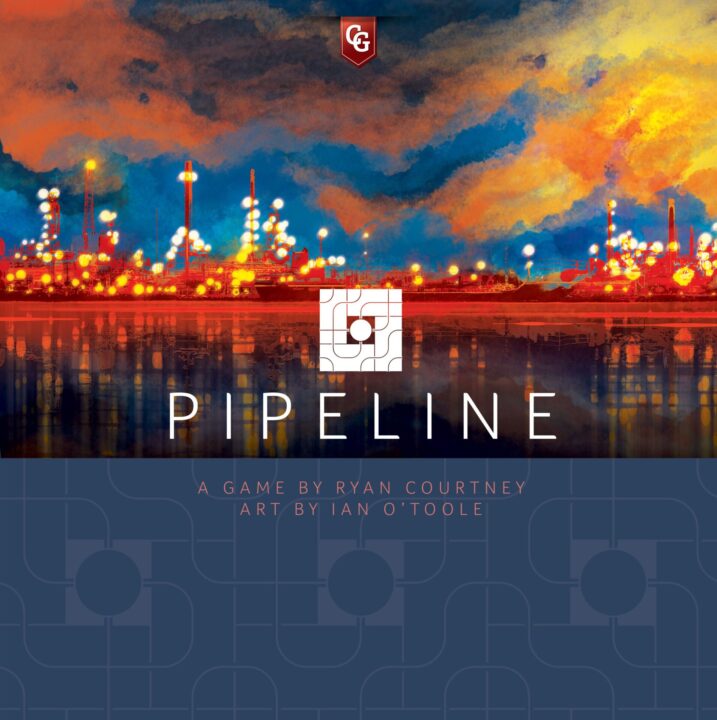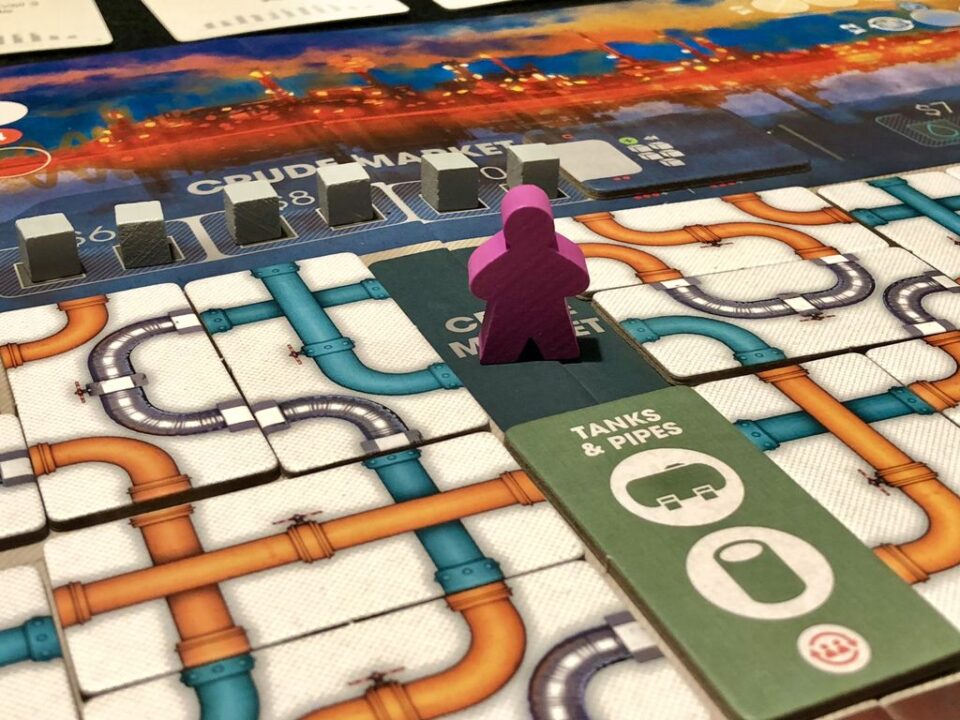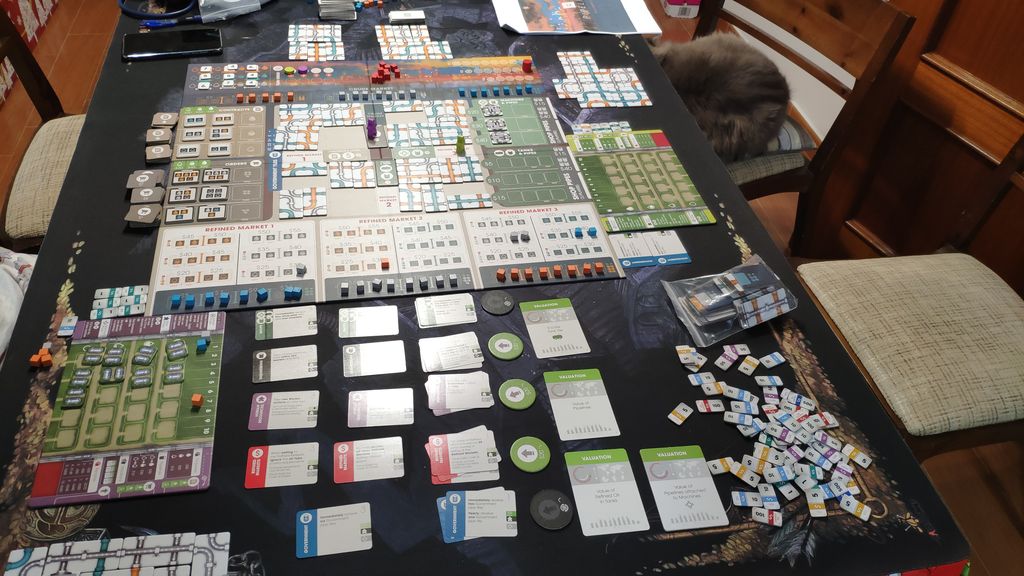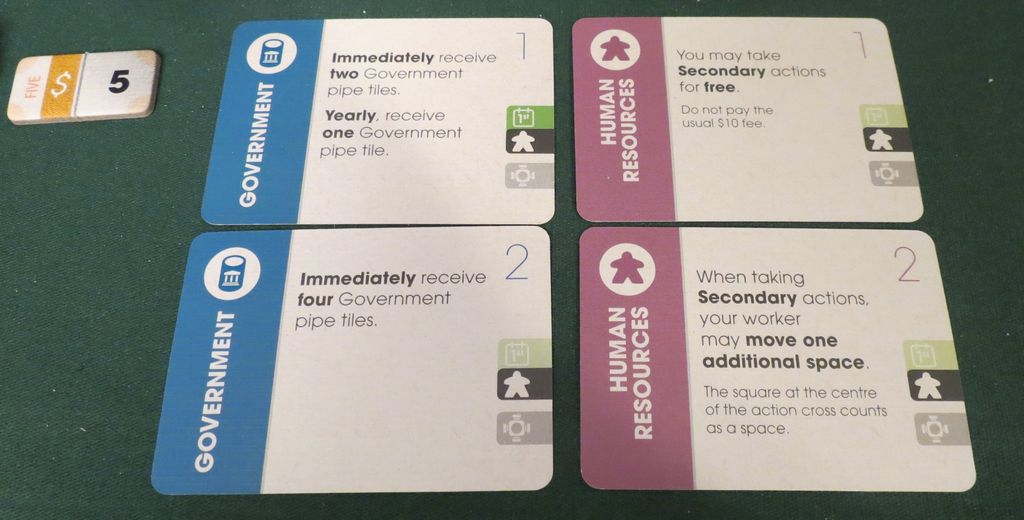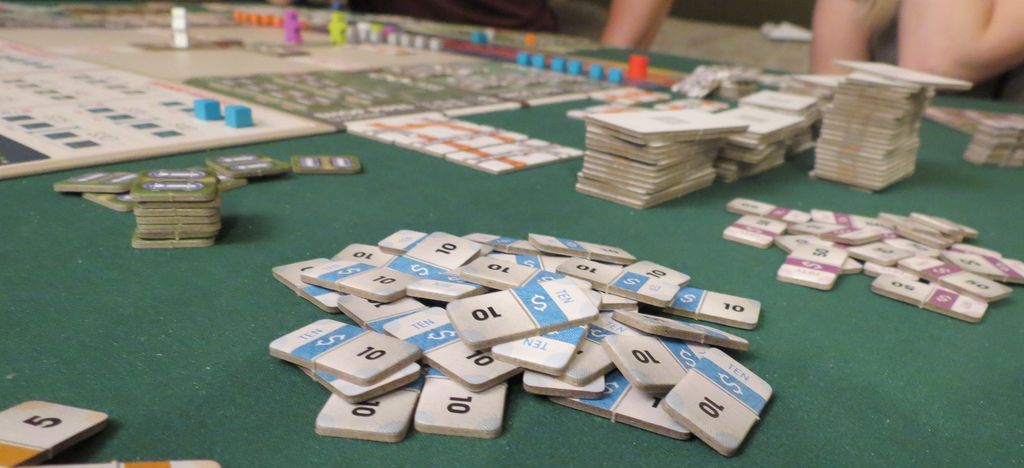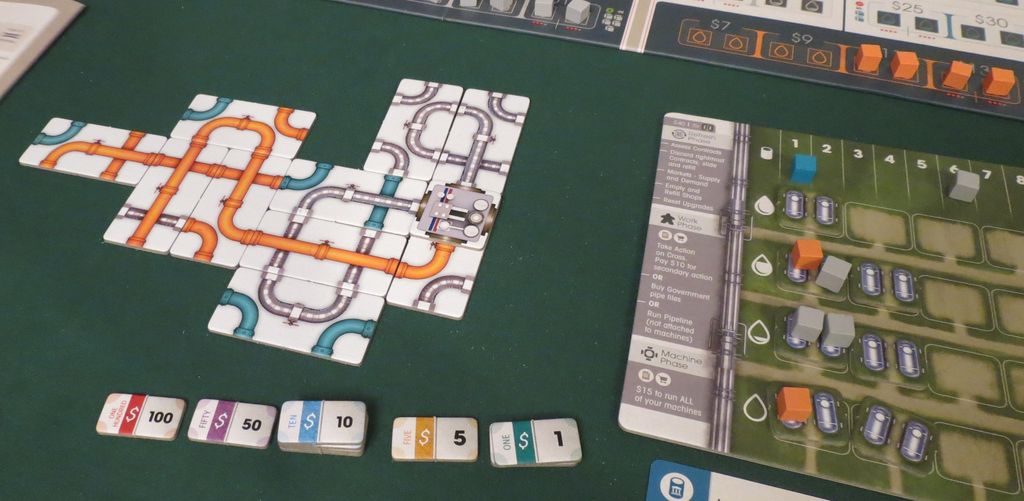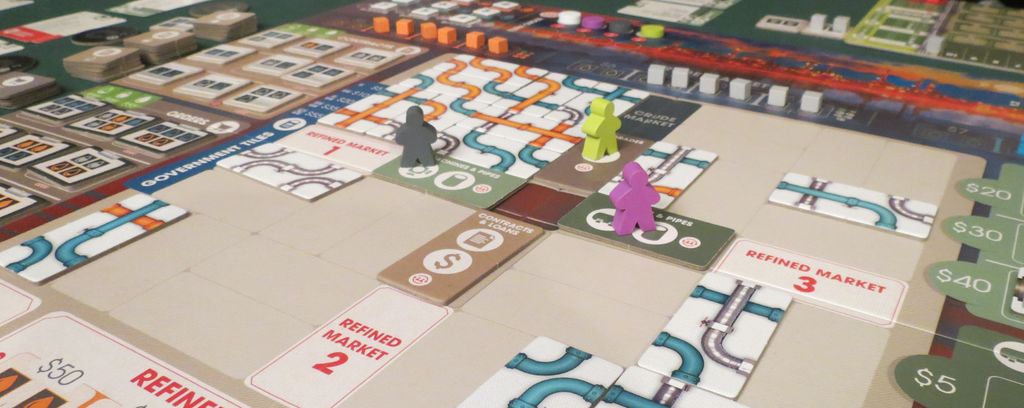Overview
Alright, folks, let’s talk about ‘Pipeline‘ today. Yep, you heard it, we’re reviewing this beast of a board game that’s all about oil, big bucks, and even bigger pipelines. So, buckle up, because I’ve got the lowdown on what makes this game tick. From its brain-burning strategy to its eye-catching artwork, I’ve played, I’ve laughed, and yes, I’ve even yelled at my friends over it. Now, it’s time to share the goods with you. Let’s see if ‘Pipeline’ deserves a spot on your game shelf!
How It Plays
Let’s talk Pipeline. This game’s a deep dive into the world of oil refinement, where strategy’s king and luck’s just a court jester. Here’s how you get from unboxing to oil baron in no time.
Setting Up
Setting up Pipeline feels a bit like assembling a colorful jigsaw puzzle where each piece is crucial for your future oil empire. First, you lay out the board, depicting various markets and the pipeline network. Players get a personal board to manage their oil refineries. You shuffle the pipeline tiles and place them within reach. Everyone starts with a bit of cash – not too much, just a humble investment to kickstart your oil dynasty.
Gameplay
The heart of Pipeline is all about building an efficient network of pipelines to refine and sell oil. Each turn, you’re doing one of three things: buying pipes, connecting pipes, or buying and selling oil. The trick is to optimize your pipeline layout on your personal board to refine oil as efficiently as possible. It’s a brain burner, with players juggling immediate needs and future plans, all while keeping an eye on competitors’ moves.
Winning the Game
After a series of rounds, the game ends, and it’s time to see who’s the slickest oil mogul. You tally up money from selling oil, bonuses from fulfilling contracts, and points from your refinery’s efficiency. The player with the most money at the end proves they’re the top tycoon in the world of Pipeline – a true master of liquid gold.
Want to know more? Read our extensive strategy guide for Pipeline.
Mastering Strategy in Pipeline: A Game of Intricate Planning
When it comes to engaging strategy and planning, Pipeline stands out as a board game that pushes players to think ahead and adapt quickly. The core of the game revolves around building an efficient network of pipelines to transport oil. But it’s not just about slapping pipes together; you’ve got to strategize. Deciding when to buy, sell, or refine your oil can make or break your oil empire. Each decision feels impactful, making every game unpredictable and thrilling. The beauty of Pipeline lies in its balance of planning and adaptation. You may have a grand strategy, but the market and your opponents won’t always cooperate. This dynamic keeps the game fresh and players on their toes. As we journey from the strategic depths of Pipeline, the next section will delve into the complexities and the learning curve that come with mastering this enthralling board game.
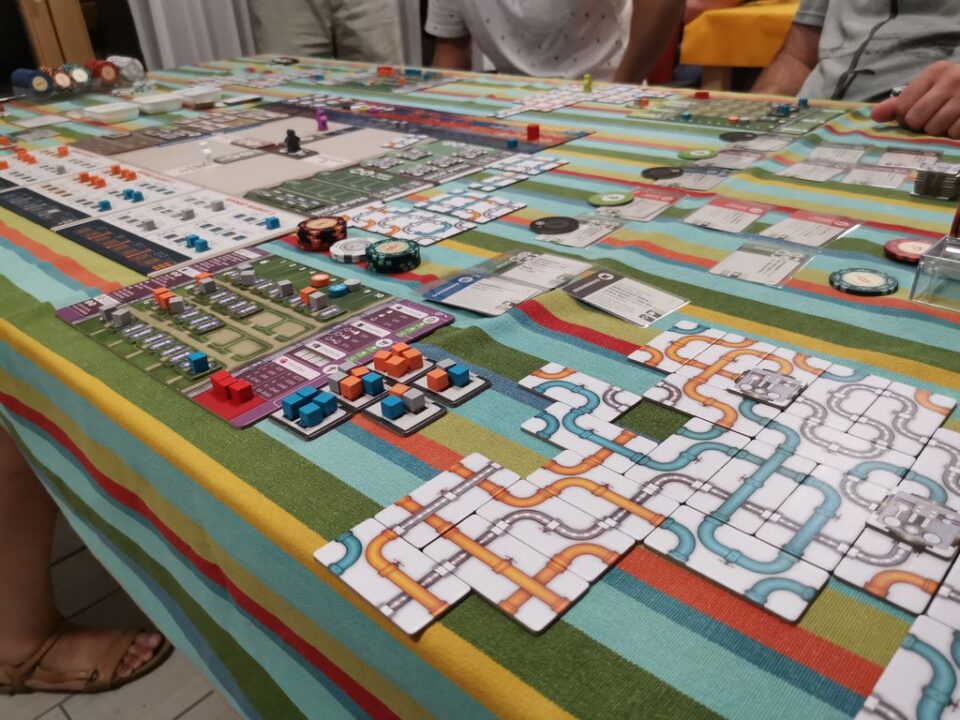
Unraveling the Complexity of Pipeline
When you first open Pipeline, you might think you’ve accidentally bought a puzzle game. Don’t let the tubes and cubes intimidate you, though! This game is a brain burner, but oh, is it a satisfying one. The learning curve? Well, it’s steep. You and your friends will probably spend the first game just trying to figure out how not to go broke. But once you’ve got the hang of it, each playthrough reveals new strategies and depths. The real challenge in Pipeline comes from balancing the need to upgrade your refinery network with the ever-present demand to sell refined oil at just the right time.
The complexity isn’t for the faint of heart. It demands attention and a love for strategic planning that’ll have you coming back for more. But, let’s not forget, a game’s not just about the brain strain; it’s also what meets the eye. Next, we’ll oil the wheels a bit and move onto discussing the artwork and component quality of Pipeline.
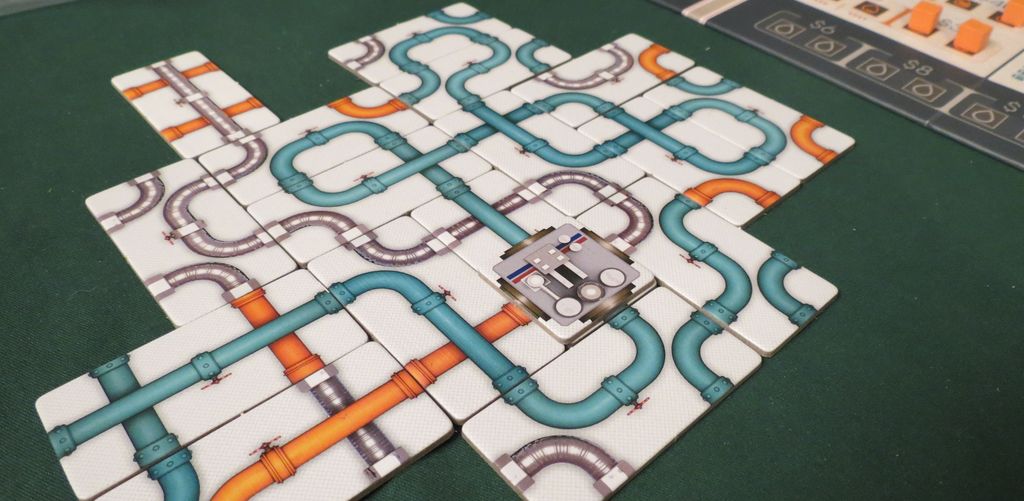
Pipeline: A Visual and Tactile Feast
When you first lay eyes on Pipeline, it’s clear the designers poured love into its artwork and components. The board itself is a maze of potential oil pipelines, rendered in vivid colors that pop off the table. It’s not just pretty; it’s functional, making the complex network of pipes easier to navigate at a glance. The quality of the components is top-notch, with sturdy cardboard and wooden pieces that feel good to handle and stand up to repeated play. The oil barrels, in particular, are a tactile delight, adding an extra layer of immersion as you physically move your resources around the board.
The attention to detail extends to the player boards and cards, which are not only beautifully illustrated but also intuitively designed, making it easier for players to plan their strategy and keep track of their progress. The art style perfectly captures the industrial theme, drawing players into the world of oil tycoons and high-stakes negotiations. With every component, Pipeline creates an engaging atmosphere that enhances the gaming experience.
Now, let’s flow into the next section, where we’ll explore the game length and replayability of Pipeline.
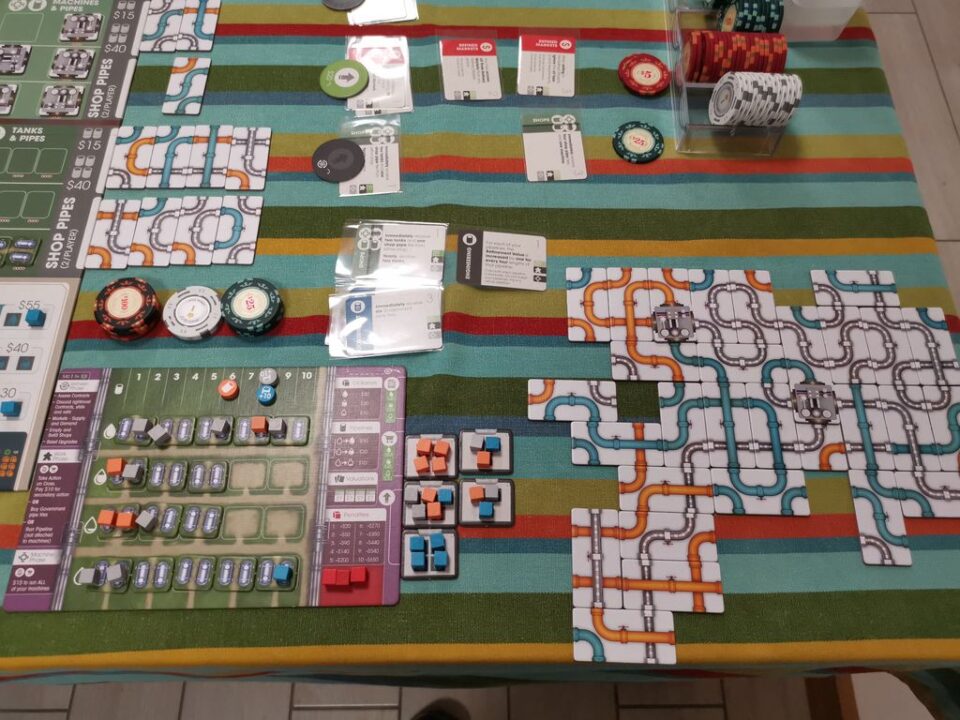
Mastering Time in Pipeline: A Balancing Act
One of the biggest surprises in Pipeline comes from its game length. Initially, you might think setting up an oil empire would take all night. But nope, sessions often wrap up in a breezy two hours, maybe a tad more with newbies. This makes it perfect for game nights, especially when you want something meatier without the all-night commitment.
Does It Stay Fresh?
And let’s talk replayability. Pipeline nails it. The setup variability ensures no two games are the same, pushing you to rethink strategies and adapt. Plus, the diverse strategies mean you can switch things up, keeping the game feeling fresh. It’s like the board game version of a good TV series; you’ll come back for more.
Do I recommend it? Absolutely. For strategy buffs looking for depth without the endless hours, Pipeline is a win-win.
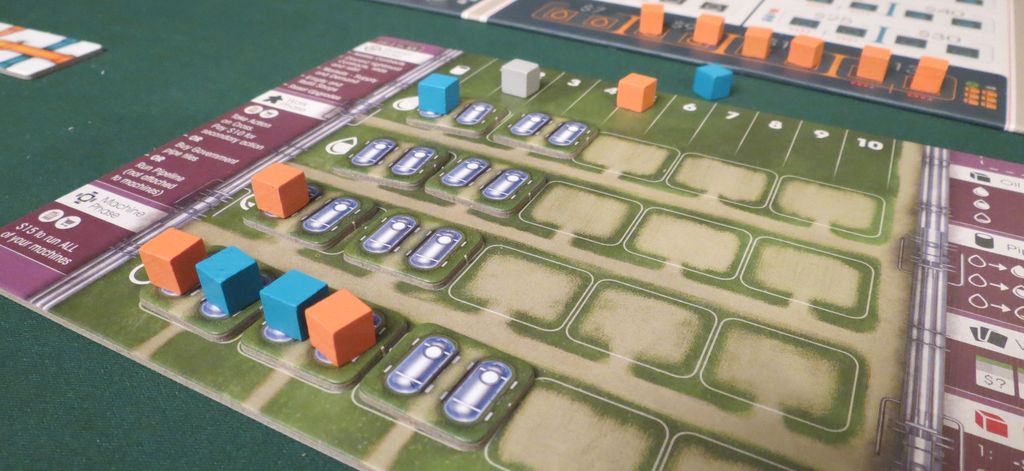
Conclusion
So, wrapping up this rollercoaster ride of a review for Pipeline, we’ve journeyed through the twists and turns of strategy, marveled at the complexity, gawked at the stunning artwork, and pondered over the replayability. Personally, after duking it out with friends on several game nights, I can wholeheartedly say that Pipeline is a gem in a sea of board games. Sure, it’s like trying to solve a Rubik’s cube in a tornado at first, thanks to its steep learning curve. But once you get the hang of it, it’s an absolute blast. The game’s high-quality components and artwork only add to the immersive experience, making you feel like a true oil magnate without the oil stains. My advice? If you’re someone who thrives on strategy over the luck of the draw and enjoys a game with depth that’ll still be interesting the 100th time you play, then Pipeline should be on your shelf. Just remember, in the world of Pipeline, it’s not just about connecting pipes; it’s about connecting with friends over a genuinely engaging and challenging game. There you have it, folks, my two cents on Pipeline. Ready to lay some pipes and strike it rich?

